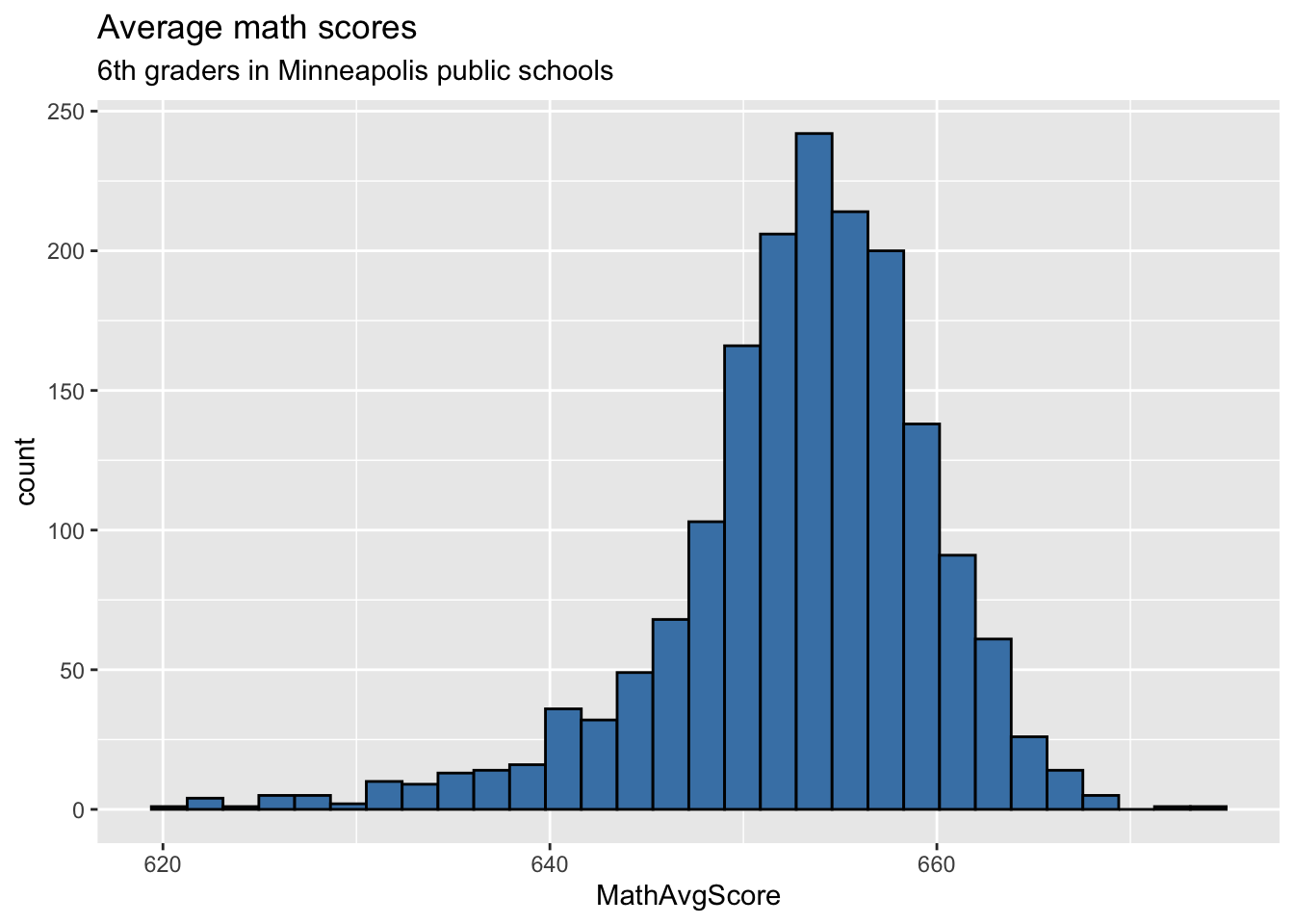library(tidyverse)
library(knitr)
library(lme4)
library(broom.mixed)
library(skimr)Lecture 14 AE: Modeling two-level longitudinal data
charter <- read_csv("data/charter-long.csv") |>
mutate(urban = factor(urban),
charter = factor(charter))Exploratory data analysis
This is not a complete EDA for this data.
Univariate EDA
ggplot(data = charter, aes(x = MathAvgScore)) +
geom_histogram(fill = "steelblue", color = "black") +
labs(title = "Average math scores",
subtitle = "6th graders in Minneapolis public schools")
Bivariate EDA
ggplot(data = charter, aes(x = charter, y = MathAvgScore)) +
geom_boxplot(fill = "steelblue", color = "black") +
labs(title = "Average math scores of 6th graders in Minneapolis public schools",
subtitle = "by school type")
Make a scatterplot of the average math score versus the proportion of students who receive free or reduced lunches in a school (based on 2010 figures).
## scatterplotWhat do you observe from each bivariate plot?
Lattice plot
Make a lattice plot of the average math scores over time for 24 randomly selected schools.
set.seed(030424)
# get sample of 24 schools
sample_schools <- charter |>
distinct(schoolid) |>
sample_n(24) |> pull()
# get data for those schools
sample_data <- charter |>
filter(schoolid %in% sample_schools)## lattice plotSpaghetti plots
Plot average math scores over time for each school. Apply a LOESS smoother (locally estimated scatterplot smoother).
ggplot(data = charter, aes(x = year08, y = MathAvgScore)) +
geom_line(aes(group = schoolid), color = "light gray") +
geom_smooth(color = "black", linewidth = 1, method = "loess") +
labs(x ="Years since 2008",
y ="Average Math Scores",
title = "Math Scores over time for 6th graders in Minneapolis public schools")
What features are easier to observe in the lattice plots versus the spaghetti plot?
What features are easier to observe in the spaghetti plot versus the lattice plot?
- Make a separate spaghetti plot of average maths scores over time by school type (charter vs. non-charter).
# spaghetti plot by school typeHow do the typical math scores from charter and non-charter schools compare over time?
How does the variability in math scores from charter and non-charter schools compare over time?
Unconditional means model
Fit the unconditional means model and calculate the intraclass correlation.
# Fit the unconditional means model# Calculate the intraclass correlationUnconditional growth model
Fit the unconditional growth model.
# Fit the unconditional growth modelCalculate the
# Pseudo R^2Model with school-level covariates
Fit the model with the school-level covariates.
# Fit model with school level covariates